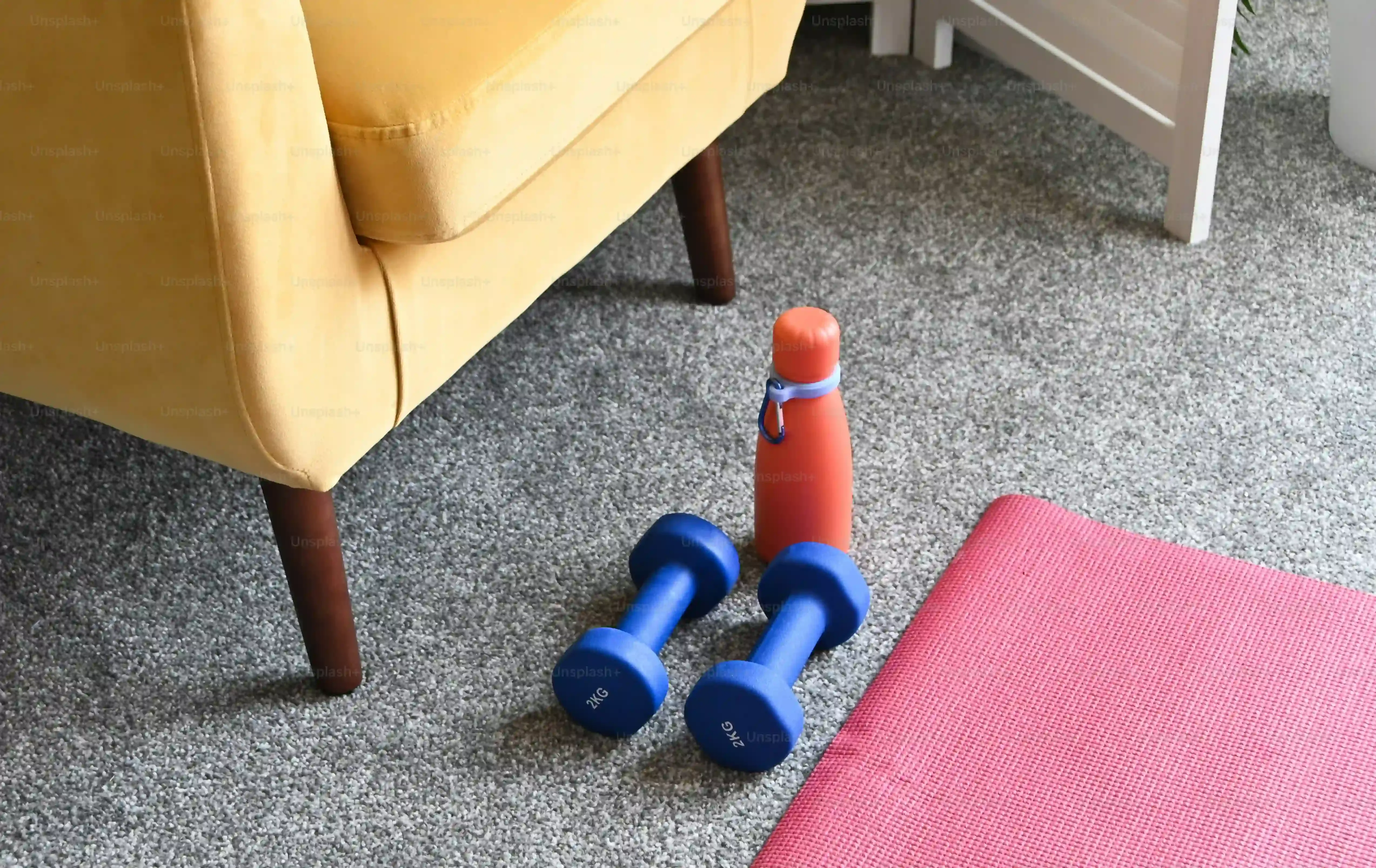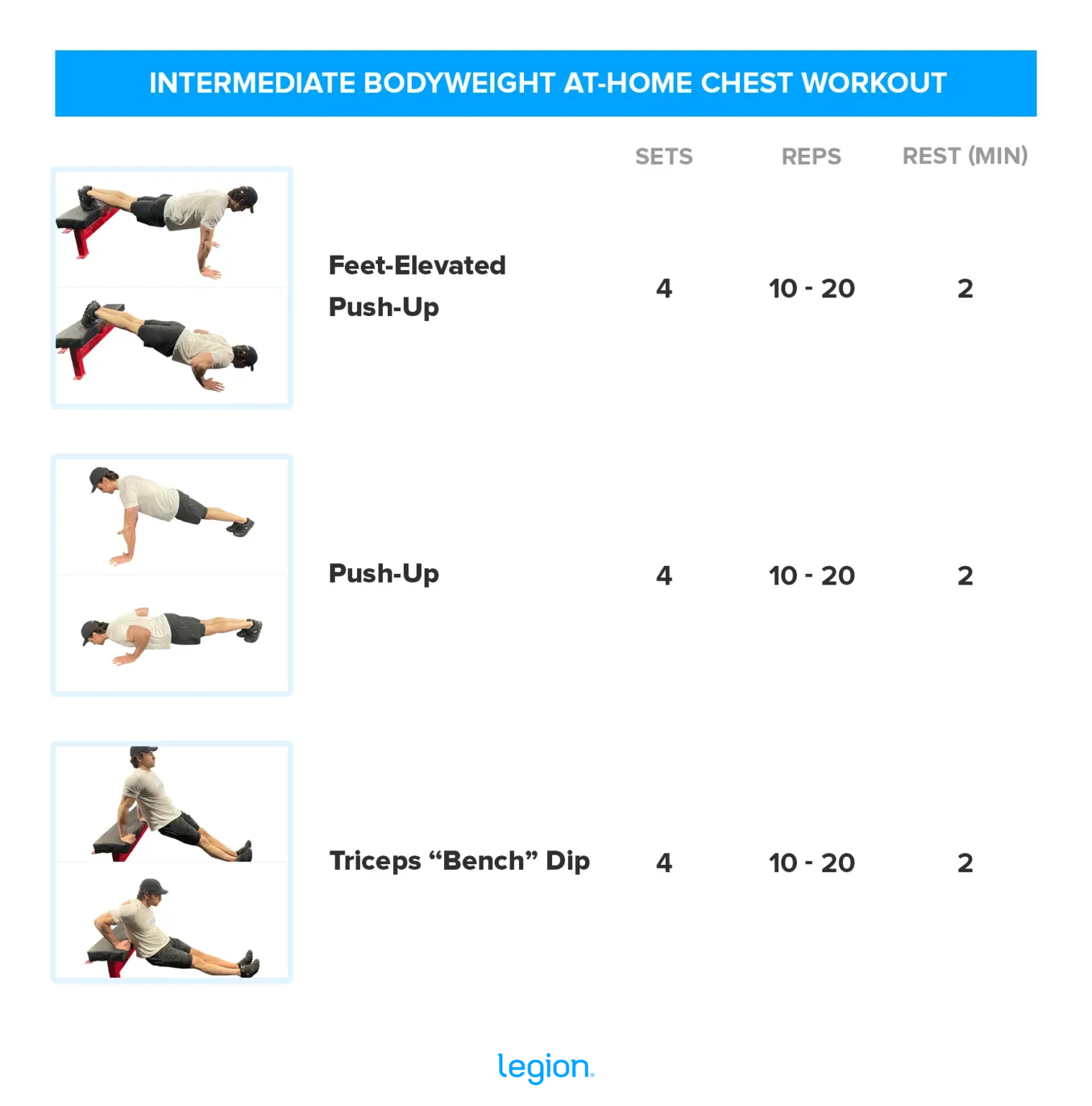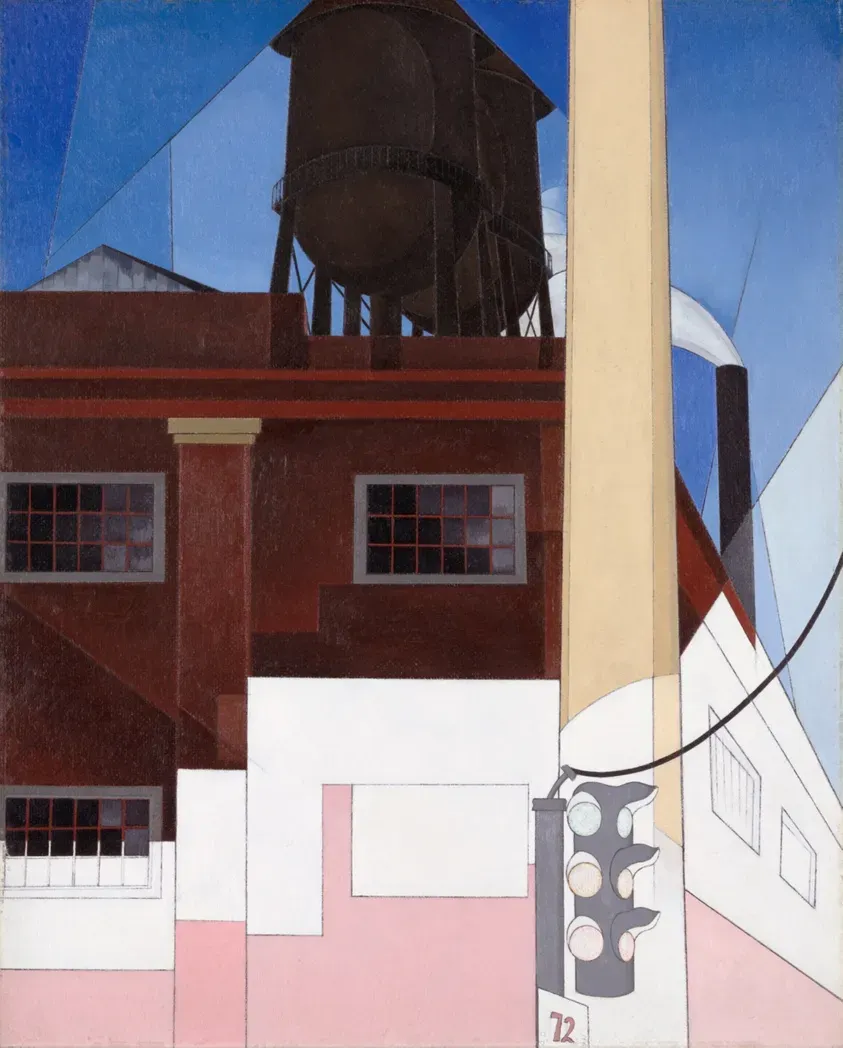Table of Contents
Let's be honest. Getting to the gym for chest day can feel like a whole operation sometimes. Traffic, crowded benches, the sheer effort of putting on actual shoes. Maybe you travel often, or life just throws you curveballs that keep you away from the iron. Whatever the reason, ditching your chest training isn't really an option if you want to build some size and strength up top.
Why Bother with At Home Chest Workouts?

Why Bother with At Home Chest Workouts?
Life Gets in the Way, But Your Pecs Don't Have To
Let's face it, life is messy. Gym memberships cost money, and sometimes, finding an hour to drive there, train, and drive back feels impossible. Maybe you're traveling for work, maybe the kids are sick, or maybe you just can't stand the guy who hoards the only decent bench. Whatever the hurdle, skipping chest day repeatedly stalls progress. That's precisely why mastering **at home chest workouts** is a game-changer. It gives you control. You can squeeze in a solid session before work, during a lunch break, or late at night. No commute, no waiting, just results on your schedule.
Think about it. You have gravity and your own bodyweight available literally anywhere. That's your starting point. You don't need fancy machines or heavy barbells to build a strong, well-defined chest. Push-ups, in their many forms, are incredibly effective. Adding resistance can be as simple as using resistance bands, a backpack filled with books, or even household items like sturdy chairs. The potential for challenging your muscles and creating overload is definitely there if you know how to manipulate the exercises.
Beyond Convenience: Real Strength and Muscle Growth
Some people scoff at bodyweight training for chest, thinking it's just for beginners. That's simply not accurate. Bodyweight exercises like push-ups demand significant core stability and work your shoulder and triceps muscles as stabilizers, leading to more functional strength than just pressing a barbell off your chest. You're not just moving weight; you're controlling your entire body through space.
Progression isn't about adding plates; it's about increasing difficulty. Moving from standard push-ups to decline push-ups, then to one-arm push-ups, or adding pauses and slower negatives, provides continuous challenge. Adding resistance bands or using furniture for incline/decline variations further increases intensity. You can absolutely build impressive pecs and push-up strength without ever stepping foot in a commercial gym. It requires creativity and understanding leverage, but the payoff is a chest you earned wherever you were.
- Flexibility: Train anytime, anywhere.
- Cost-Effective: Minimal to no equipment needed.
- Functional Strength: Builds core and stabilizer muscles.
- Injury Prevention: Often less stress on joints than heavy lifting.
- Progression: Endless variations to increase difficulty.
Essential At Home Chest Workouts: Bodyweight Basics

Essential At Home Chest Workouts: Bodyweight Basics
The Mighty Push-Up: Your Foundation
Alright, let's talk about the undisputed king of at home chest workouts: the push-up. This isn't just some basic exercise; it's a full-body movement that torches your chest, shoulders, and triceps while demanding serious core stability. For most people, starting with standard push-ups is the way to go. Hands slightly wider than shoulder-width, body in a straight line from head to heels, lower your chest towards the floor, then push back up. Simple, right? But simple doesn't mean easy, and definitely not ineffective.
Focus on form over speed. Keep your elbows tucked slightly towards your body, don't let them flare straight out like wings. Engage your core to prevent your hips from sagging. If a full push-up is too tough right now, elevate your hands on a sturdy chair or a counter. The higher the elevation, the easier it is. Work towards getting your chest to touch the floor with good form. That's the goal.
Varying Your Angles for Full Pec Development
Once standard push-ups feel comfortable, it's time to mess with the angles. This is where at home chest workouts get interesting. Incline push-ups, where your feet are elevated (like on a bed or chair), shift the focus to the upper chest. Think about hitting that stubborn upper pec area that often lags behind. Conversely, decline push-ups, with your hands elevated on a chair or bench, target the lower chest. Using different angles ensures you're hitting all the muscle fibers in your pectorals.
Don't forget about hand placement either. Bringing your hands closer together for diamond push-ups (forming a diamond shape with your thumbs and index fingers) puts a massive emphasis on your triceps and the inner part of your chest. A wider grip will hit the outer chest more. Play around with these variations to see what you feel working the most. Listen to your body, but also push its limits safely.
Push-Up Variation | Primary Focus | Difficulty (Relative) |
|---|---|---|
Elevated Hands (Incline) | Lower Chest | Easiest |
Standard Push-Up | Overall Chest | Moderate |
Elevated Feet (Decline) | Upper Chest | Harder |
Diamond Push-Up | Inner Chest / Triceps | Hardest (for many) |
Beyond the Basic Push: Isometric Holds and Explosive Power
Bodyweight at home chest workouts aren't just about reps. You can increase intensity dramatically by manipulating tempo and adding holds. Try isometric push-ups where you hold the bottom position, just above the floor, for 5-10 seconds. That time under tension is brutal and incredibly effective for building strength and endurance in the muscle.
For something different, work on explosive push-ups. Lower slowly, then push up with enough force that your hands leave the ground. Even a small hop counts. This trains fast-twitch muscle fibers and builds power. Just make sure you can land safely. These advanced variations prove you can keep progressing with nothing but your body and the floor.
Adding Resistance to Your At Home Chest Workouts

Adding Resistance to Your At Home Chest Workouts
Making Bodyweight Harder: The Art of Creative Resistance
so you've mastered the basic push-up variations and you're thinking, "Alright, this is great, but how do I really push it without a bench press?" This is where you get creative with your at home chest workouts. Resistance doesn't just come in iron plates. Grab a backpack. Fill it with books, water bottles, sandbags, whatever you have lying around that adds weight. Slap it on your back and suddenly those standard push-ups feel a whole lot heavier. It's simple, effective, and uses gear you already own.
You can also use sturdy furniture. Elevating your hands on chairs for decline push-ups or your feet for incline push-ups changes the leverage and muscle emphasis. If you have two chairs, you can even attempt dips, which are fantastic for the lower chest and triceps, though they require some stability. Don't be afraid to look around your living space and see what can become part of your impromptu gym setup. Just make sure it's stable and won't collapse mid-rep – nobody needs that kind of drama.
Resistance Bands: The Portable Powerhouse
If you are going to invest in one piece of equipment for at home chest workouts, make it resistance bands. These things are ridiculously versatile and take up zero space. You can loop them around your back and grab the ends for banded push-ups, adding tension throughout the movement, especially at the top where push-ups are usually easiest. This helps build strength through the full range of motion.
You can also anchor a band to a sturdy object (like a closed door using a door anchor, or even wrapping it around a heavy table leg) and perform chest presses or flyes standing up or kneeling. This mimics cable exercises you'd do in a gym and allows you to hit your chest from different angles with controlled resistance. Bands come in various strengths, so as you get stronger, you just grab a thicker one. It’s like having a weight stack in your pocket.
- Banded Push-Ups: Loop band around back, hold ends in hands, perform push-up.
- Standing Band Press: Anchor band behind you, press forward like a standing bench press.
- Banded Flyes: Anchor band behind you, perform chest fly motion.
- Backpack Push-Ups: Load a backpack and wear it while doing push-ups.
- Chair Dips: Use two sturdy chairs to perform dips (targets lower chest and triceps).
Warming Up and Avoiding Pain During At Home Chest Workouts

Warming Up and Avoiding Pain During At Home Chest Workouts
Why Pretend You're Not a Rusty Robot?
Look, nobody wants to feel like they're going to tear something just by doing a few push-ups. Jumping straight into intense at home chest workouts without prepping your body is like trying to start a cold engine and immediately redlining it. It's a recipe for snapping something important. Your muscles and joints need a little heads-up that they're about to do some work. Ignoring a proper warm-up is just asking for tweaks, strains, or worse, an injury that keeps you sidelined longer than a bad internet connection.
A good warm-up isn't just about getting your heart rate up a bit. It's about increasing blood flow to the muscles you're about to use, improving joint mobility, and activating the right movement patterns. For at home chest workouts, this means getting your shoulders, chest, and triceps ready. Think of it as greasing the gears before putting them under load. Skipping this step might save you five minutes, but it could cost you weeks of recovery.
Simple Moves to Get the Juices Flowing
so how do you actually warm up effectively for those at home chest workouts without spending another hour doing it? Keep it simple and focused on dynamic movements. Static stretching (holding a stretch) is generally better saved for after the workout. Before you start pressing, you want movement. Arm circles, shoulder rotations, and light bodyweight movements are your friends here. You're trying to gently increase range of motion and get the muscles warm, not exhaust yourself.
Include some light, easy versions of the exercises you plan to do. If you're doing push-ups, start with knee push-ups or elevated push-ups just to run through the motion. Perform controlled movements, focusing on feeling the muscles engage. This also serves as a quick check-in with your body – are there any tight spots or aches you need to be mindful of? Pay attention now to avoid pain later.
- Arm Circles (forward and backward, 10-15 reps each way)
- Shoulder Rotations (forward and backward, 10-15 reps each way)
- Chest Stretches against a wall or doorway (gentle, dynamic movement)
- Light Knee Push-ups or Elevated Push-ups (1-2 sets of 10-15 reps, easy pace)
- Triceps Extensions (using bodyweight or a light band, 1 set of 15-20 reps)
Making At Home Chest Workouts Work For You
So there you have it. Building a solid chest doesn't require a monthly membership or navigating the questionable hygiene of a public gym. At home chest workouts, when done with intention and progression, can absolutely deliver results. Start with the basics, focus on form, and don't be afraid to get creative with resistance. Consistency beats convenience every time, and now you've got the tools to get a decent chest session in no matter where you are. No excuses.
